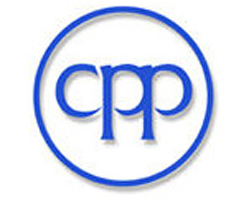FREQUENTLY ASKED QUESTIONS
Chicago Power & Process does not stock any parts. We are strictly a sales office. However, most of our principals carry spare parts, so let us know what you need, and we can get it shipped quickly.
Some of our principals do accept credit cards. Please contact us for specific information.
The answer varies, depending on the type of heat exchanger. For a shell and tube, hairpin, or a plate heat exchanger, we will need the following information:
Five of the following:
– Warm fluid inlet temperature
– Warm fluid outlet temperature
– Warm fluid flow rate
– Cold fluid inlet temperature
– Cold fluid outlet temperature
– Cold fluid flow rate
– Each side of the exchanger needs at least two values from the above list. – Or, heat load and four values from above list (Again, need two values from each side.)
- Allowable pressure drop for both fluids
- Inlet pressure if fluid is a gas
- Property data: We have a large data base of property data, but you may need to supply data for a proprietary fluid. Generally, we need thermal conductivity, specific gravity (or density), specific heat, and viscosity, at 2 points 1 above the maximum temperature for each fluid in the exchanger, and 1 below the minimum temperature of each fluid.
In addition to sizing information, we will need to know:
• The major materials of construction on both the warm and cold sides
• The design pressure and temperature on both sides
• Any special requirements
Yes. Chicago Power & Process has worked on many heat exchangers that required CRN (Canadian Registration Number) approval or European PED (Pressure Equipment Directive) certification. Approval can usually be obtained within the normal shipping schedule, but there can be delays, especially for brazed aluminum units, due to the complexity of the approval process. Contact us as early as possible in your project, if CRN or PED will be required.
In order to properly size and quote silencers for blower applications, we need:
• Blower manufacturer and model number
• Blower speed in RPM
• Air flow in CFM
• Blower discharge pressure (PSIG) for pressure applications, or inlet vacuum level (” Hg) for vacuum applications
The answer varies, depending on the type of heat exchanger. For a shell and tube, hairpin, or a plate heat exchanger, we will need the following information:
Five of the following:
– Warm fluid inlet temperature
– Warm fluid outlet temperature
– Warm fluid flow rate
– Cold fluid inlet temperature
– Cold fluid outlet temperature
– Cold fluid flow rate
– Each side of the exchanger needs at least two values from the above list. – Or, heat load and four values from above list (Again, need two values from each side.)
In order to properly size and quote silencers for vent applications, we need:
• Upstream pressure,
• Upstream temperature,
• Type of gas,
• Gas flow rate (preferably in lbm/hr),
• Desired noise level at what distance,
• Size of vent valve and pipe size leading to silencer.
Yes to both questions. In addition to standard carbon steel fabrication, Stoddard Silencers has provided silencers in 304SS and 316SS, including acoustical pack. ASME code stamped silencers can be provided at additional cost.

